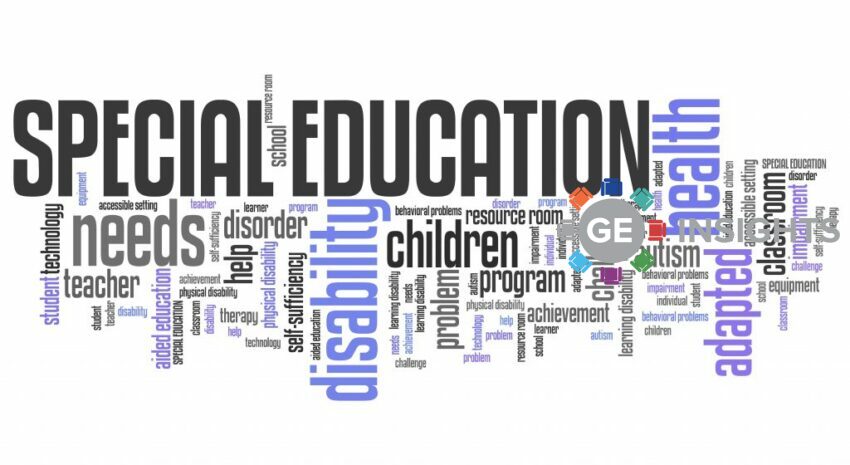Recent research from the University of Derby found that a quarter of those surveyed in the research had hidden their disability from their HR department and that only 36% were open with colleagues about their condition. Acas have shared with us ways employers can make adjustments and improvements to better support disabled candidates and colleagues.

If the pandemic taught us anything, was it not that we all depend on others and nothing is more precious than someone’s health?
Despite those painful but valuable lessons, Acas’ Helpline Advisers handled more calls last year about disability discrimination than the other eight protected characteristics combined, and disability discrimination featured in nearly 20% of the employment tribunal cases our Conciliators worked towards resolving.
Disability discrimination is no doubt a complicated subject. To support both employers and workers, Acas has published guidance which delves into the nuts and bolts of the law. Our new supporting guide further sets out how businesses can bring about more inclusive work spaces for their disabled workforce.
The language of the law and the power of language
The Equality Act 2010 brings together all protections against discrimination, harassment and victimisation at work. The law covers employees, workers, job applicants, as well as contractors and self-employed people hired personally to do the job. Everyone working within public authorities and those discharging public functions have additional legal obligations under the Public Sector Equality Duty.
In the simplest terms, employers must do all they reasonably can to protect people from discrimination and take steps to prevent disability discrimination at work. They must also make reasonable adjustments, where they know or could reasonably be expected to know that someone is disabled.
The definition of a disability under the Equality Act is complex: an individual must have a ‘physical or mental impairment’, and this must have a ‘substantial and long-term adverse effect on their ability to carry out normal day-to-day activities’. The finer points of the definition are set out in Acas guidance, including what is meant by ‘substantial’ (not what you might expect), ‘long-term’ and ‘day-to-day-activities’.
It can be very easy to get caught up in labels and what is and is not a disability. But disability is just one word trying to describe a billion different stories – the global number of people who report as being disabled – and every one of them will be affected differently. Not everyone considered by law as having a disability will consider themselves disabled either.
Employers should always be led by any disabled colleagues’ preferences in terms of the language used. This should also be reviewed over time, updated to reflect any changes to either their situation, their role or working environment, and the more general discourse surrounding disability.
The duty to make reasonable adjustments
Failure to make reasonable adjustments continues to be a common form of disability discrimination. It is a duty which rests with employers, so is not something optional, yet under the harsh spotlight of the pandemic two in five disabled employees reported not receiving the reasonable adjustments they needed at work.
Reasonable adjustments exist to remove barriers (be they physical or operational) which would otherwise leave disabled colleagues at a disadvantage. Furthermore, they must be introduced without unreasonable delay. Among other things, Business Disability Forum is campaigning for employers to reply to requests for reasonable adjustments within two weeks.
What is ‘reasonable’ will always be case specific, but there are common examples, such as providing extra or specialised equipment, implementing a phased return to work, discounting some or all sickness absence related to a disability towards any trigger points, or a change to working arrangements, such as homeworking. These will likely change over time as conditions fluctuate, and some disabled people will not need or want any adjustments at all. Either way, the overwhelming majority of adjustments will cost either very little or nothing at all.
Disabled people will inevitably know better than anyone how their impairment affects them and what would be useful in reducing its impact on their ability to perform their role effectively. With more uncommon conditions, or where someone has recently developed a disability, appropriate medical advice or third-sector insight may prove particularly useful too.
The key is for people managers to invest time in listening to their disabled colleague, learning about their specific circumstances and agreeing any support measures they might need. Making sure to ask all employees about adjustments they would benefit from can also help remove the apprehension some disabled people might feel about requesting support.
Strategies for preventing and tackling disability discrimination
Disability remains much-misunderstood. Various academic papers make clear that within the world of work:
- there exists “a lack of awareness of disability, coupled with pessimistic views or beliefs about disabled workers’ performance”, and that
- “employers tend to underestimate the productivity or work capacity of disabled employees (Jones, 2008; Jones et al., 2006) and overestimate the costs of making workplace accommodations or reasonable adjustments to reduce disadvantages for disabled people (Heymann et al., 2014).”
It is not surprising then that research by Samsung found that of those disabled people who are in employment (the disability employment gap currently sits at 30 per cent), almost half have made efforts to conceal impairments from colleagues. Their silence is driven by the very real fears many have about how such disclosures will be received, with reticence often informed by painful, historic experiences.
The persistent stigma attached to disability means that disabled people face discrimination and harassment across all areas of work, from accessibility of the workplace and information, to decisions around recruitment, redundancies, learning and development opportunities, and even work-related events.
While a disabled person’s decision to discuss their disability is one for them alone to make, the existing lack of dialogue in many workplaces is not conducive to the change needed to bring about more open working environments. This may then pose difficulty in building a full and accurate picture of disabled colleagues’ experiences at work.
However, employers do have a number of channels at their disposal to encourage disclosure. For instance, gathering information via the anonymised equality and diversity monitoring forms completed by job applicants, and implementing disability workforce reporting, can all help organisations understand the extent of any existing problems. Trade unions and other workforce representatives, along with staff networks, not only provide a means of support for individuals, but they can also act as a critical friend to the organisation.
Of course, data capture is merely the start; figures count for nothing unless used as the basis for meaningful action. Overcoming the significant lack of understanding and misconceptions requires continuous education, communication, and action. Simple steps that all employers can implement include:
- dedicating time to increasing awareness of common health conditions and neurodiversity, and the law and good practice, for example through regular training for all staff and people managers
- clearly setting out and communicating a zero-tolerance policy on all forms of disability discrimination – these should be regularly reviewed and informed by expert advice, including the experiences of any disabled employees willing to share their valuable insight
- encouraging the sharing of personal testimony, for example, from senior colleagues or through staff networks, while also respecting privacy and confidentiality
- never making assumptions – the majority of disabilities are non-visible, but appearing to be ‘fine’ and actually feeling that way can be worlds apart
Leading by example
When it comes to equality, diversity and inclusion, doing the bare minimum is never enough.
As the Chartered Management Institution (CMI) recently reported:
“Shifting cultures and biases will require uncomfortable transformations, conversations and transitions. But the potential gains of a full-participation economy are huge – not only in terms of GDP and business profits, but through helping everyone to live better lives.”
Genuine change has to come from the top. One of the most powerful things employers and HR professionals can do is create an open-minded workplace in which everyone, including disabled people, feel comfortable disclosing personal information, safe in the knowledge both it and they will be treated with dignity and respect. Nobody should have to spend their working lives pretending to be somebody else.
Register FREE to access 2 more articles
We hope you’ve enjoyed your first article on GE Insights. To access 2 more articles for free, register now to join the Government Events community.
(Use discount code CPWR50)




